
When I first visited Kenya, back in 2008, the national parks and reserves were empty – not of wildlife but of tourists. At Samburu, Nakuru, and the Maasai Mara National Reserve, there were barely any vehicles on the roads. I got to photograph lions, elephants, and other animals in what felt like a peaceful, untouched wilderness.
Africa’s wildlife areas aren’t always so uncrowded – we’ve all seen images of safari vans swarming around big-cat sightings. But, at that time, political unrest and violence, following Kenya’s contested 2007 election, had put off international travelers from visiting. What felt initially to me like good luck, to have these remarkable locations almost to myself, was clearly a disaster for Kenyans working at lodges and camps. With fewer tourists and less money, many were struggling to make a living.
Before COVID-19, wildlife tourism supported 21.8 million jobs worldwide, including 3.6 million across Africa, directly contributing US$29.3 billion (£22.2 billion) to Africa’s economy. Between 10 and 13 percent of Kenya’s GDP (gross domestic product) comes from tourism. But my first assignment in Africa was an insight into how precarious it can be to rely so heavily on international tourism to provide incomes or to fund conservation work.
Denne historien er fra March 2021-utgaven av BBC Wildlife.
Start din 7-dagers gratis prøveperiode på Magzter GOLD for å få tilgang til tusenvis av utvalgte premiumhistorier og 9000+ magasiner og aviser.
Allerede abonnent ? Logg på
Denne historien er fra March 2021-utgaven av BBC Wildlife.
Start din 7-dagers gratis prøveperiode på Magzter GOLD for å få tilgang til tusenvis av utvalgte premiumhistorier og 9000+ magasiner og aviser.
Allerede abonnent? Logg på

SNAP-CHAT
Justin Gilligan on giant spider crabs and holding hands with an octopus
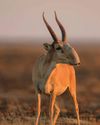
STEPPE CHANGE
Herds of saiga have returned to Kazakhstan, but there's a fine balance to tread
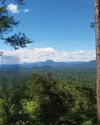
TREES FOR LIFE
Community is at the heart of conservation in the tropical forests of southern Belize
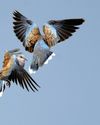
WHEN DOVES CRY
Turtle doves are now the UK's fastest declining bird species, but the RSPB is on a mission to save them

SURVIVAL OF THE CUTEST
We can't help being drawn to cute creatures, but our aesthetic preferences both help and hinder conservation

LIGHT ON THE NORTH
Spectacular images of Arctic foxes, reindeer and musk oxen reveal the wild beauty and diversity of Scandinavia

ROLLING IN THE DEEP
The super-sized crustacean that lives in the deepest, darkest ocean
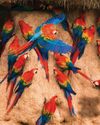
LET'S GET TOGETHER
Clay licks deep in the Amazon explode in a riot of colour, with macaws the stars of the show

FEMALE OF THE SPECIES
To sponge or not to sponge? That is the question for the bottlenose dolphins (Tursiops aduncus) living in Shark Bay, Western Australia.
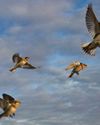
7 nature encounters for the month ahead
WITH NATURALIST AND AUTHOR BEN HOARE